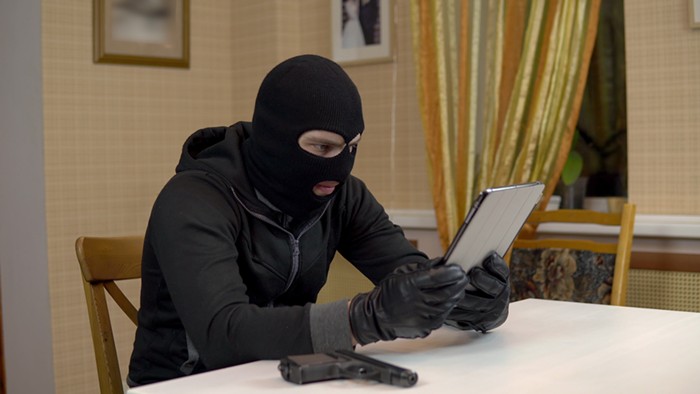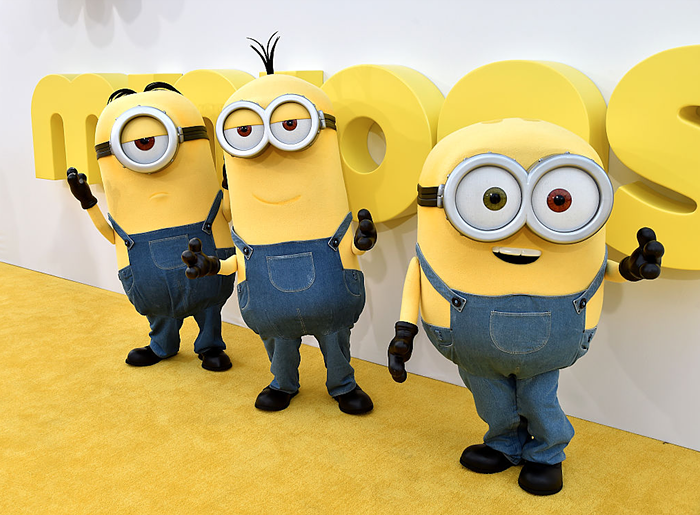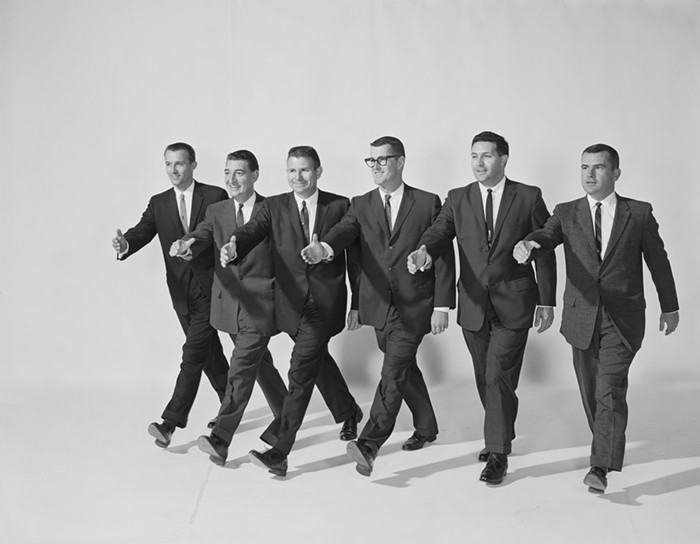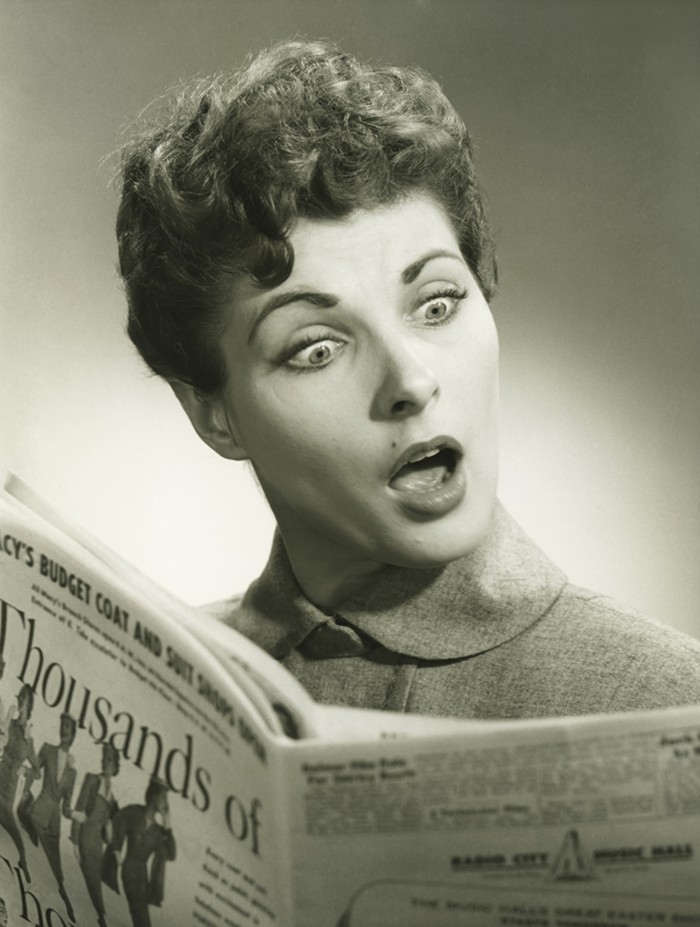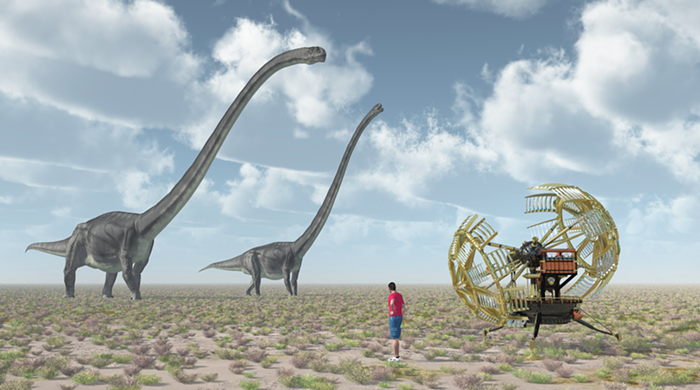Portland Institute of Contemporary Art 242-1419
Through Feb 11
Kate Shepherd's current exhibit of paintings at the Portland Institute of Contemporary Art offers a retreat into the meditative. Steered away from visual clutter, the work is economic, even sparse. The thin paintings fade into gallery walls, with Shepherd's hand quietly offering a suggestion of space for the viewer to crawl into.
In "Standing Flower Box on Two Reds, Slight Bend Forward, Line Overlap" (above), Shepherd offers a slightly skewed geometric form that challenges the viewer's perception of space. The foundation of the piece is two monochromatic panels. The field of the top panel is done in a burnt red, while the bottom is in a brighter shade of red. Connecting the two fields is a slight rendering of a box, which of course seems straight forward. However, the top panel illuminates a slight bend in the geometric form. While Shepherd's effort seems minimal, this economic move creates the intrigue. For the viewer committed to spending time with the work, the altered geometric form provokes a variety of cerebral responses. Ideas of light refraction, the psychology of space, and the impact of color, all surface from Shepherd's work.
This optical intrigue continues throughout the exhibit, including noticeable deviation in selected works. In "Grasses, All Green" Shepherd displays a row of various-sized prints on a wood shelf. In each print the artist includes a background of green, screenprinted into careful rectangular fields. Atop this layer Shepherd applies carbon transfers of loose, vertical marks. The geometric impulse found in a bulk of the exhibition is loosened in this piece, which allows for the representation of blades of grass to appear. In this case, Shepherd allows her hand to become a more noticeable factor, which makes the piece one of the more enlivened works in the show. "Grasses" remains cool and intellectual, but adds a gesture of playfulness that connects more immediately with the viewer.
In a similar fashion, "Guillotine Shard; Off White on White" entreats the viewer to Shepherd's visually trickery at its finest. She creates the illusion of a cast shadow with a combination of two shades of white paint. A trapezoidal shape is screenprinted directly onto the gallery wall, the interior of the shape broken up with detailings similar to a cast iron brocade. Situated near an actual window, the piece is a clever play on the viewer's perception. At first glance it looks like an actual reflection from an ornate window. Within "Guillotine," Shepherd arrives at her most poetic, drawing the viewer in to consider a simple fiction. While the exhibit as a whole is not easy to grasp and appreciate, the viewer that shells out the effort will leave with an understanding of Shepherd's suggestions of forms.
